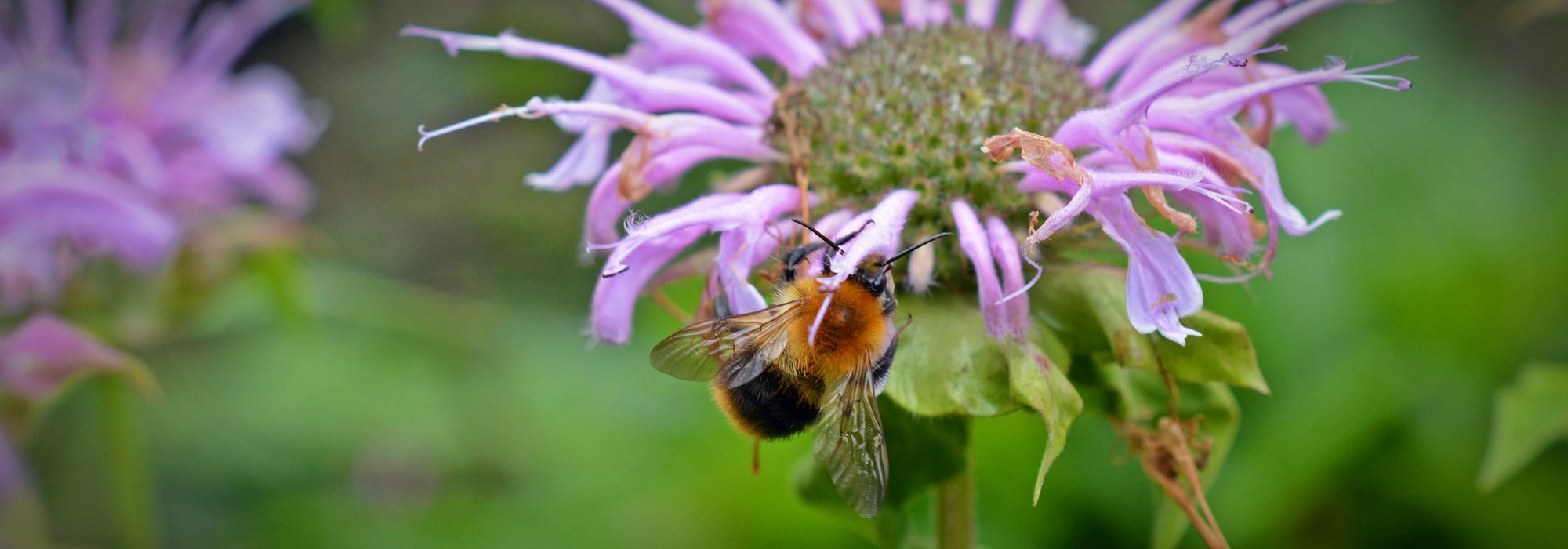
Monarda: planting, growing and care
Contents
Monarda in a nutshell
- Monarda offers an original summer flowering in pink, mauve, or white.
- It is ideal for borders or in a natural garden.
- Aromatic and medicinal, Monarda is also perfect for an herb garden.
- Easy to grow, it adapts to a wide variety of climates and soils.
- Its melliferous flowers attract pollinators and promote biodiversity.
A word from our expert
Monarda is a lovely perennial plant that offers a profusion of frilly, original, and decorative flowers in summer. Among the most well-known species is Monarda didyma, a species whose highly aromatic leaves were used in infusions by Native Americans, earning it the names “Oswego Tea” and “Red Bergamot”. Very popular, Red Monarda is also one of the varieties favoured by gardeners, but the different species and cultivars come in a wide range of colours from white (M. ‘Schneewittchen’) to mauve (M. fistulosa menthifolia) and pink (M. ‘Croftway Pink’).
In addition to its charming, melliferous flowers, which are highly appreciated by bees, Monarda also has the advantage of bearing a highly aromatic foliage. Its scent combines mint and bergamot… hence its third name, “Bergamot Monarda”! It is highly valued in infusions but also in cooking, where it enhances many dishes, sauces, or beverages. Its medicinal properties, particularly antibacterial and digestive, are also used in herbal medicine.
In the garden, Monardas are easy to use. They suit many garden styles, bringing colour and whimsy. They shine just as brightly at the edge of a vegetable garden, in an herb garden, or in a mixed border of an English garden. Natural and wild, they are simply perfect alongside grasses, Asters, and Echinaceas in naturalistic style gardens.

Monardas come in a beautiful palette of colours.
Hardy and low-maintenance, Monarda is an easy perennial that thrives in full sun and adapts to a wide range of soils. It only fears very poor soils (a spring application of compost is sufficient for its needs), wet lands, and confined spaces that promote the appearance of powdery mildew, the only benign disease known to affect it.
Once established, it is a perennial that spreads quickly, forming a large clump. It is sometimes criticised for this dynamism, but rest assured: it is quite easy to contain, and a few strikes with a spade are enough to limit its expansion!
Description and Botany
Botanical data
- Latin name Monarda
- Family Lamiaceae
- Common name Monarda, bergamot
- Flowering Summer
- Height 0.40 to 1 m
- Exposure sun or partial shade
- Soil type fertile and cool
- Hardiness down to -28° C
Monarda is a perennial herbaceous plant native to the eastern United States. Robust and low-maintenance, it has easily naturalised throughout North America.
Its upright stems, with a square section typical of the Lamiaceae family, give it a bushy habit of 80 cm to 1 m tall. However, there are dwarf varieties, such as Monarda ‘Fireball’, which do not exceed 40 cm in height.
Its deciduous foliage consists of leaves that are more or less deep green, sometimes tinged with purple. Measuring 10 to 15 cm long, they are lanceolate and dentate, sometimes villous on their underside. The veins are more or less prominent, depending on the varieties. Highly aromatic, the foliage of Monarda releases a citrus scent reminiscent of bergamot when crushed.
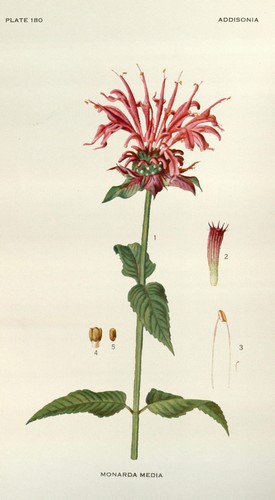
Monarda – botanical plate
The remarkable flowering, in the form of fluffy pom-poms, occurs in summer, generally between July and September. The tubular flowers, red, purple, pink, lilac, or white depending on the varieties, are borne by purple, red, or green bracts. The flowers of Monarda consist of two lips: an upright upper lip and a more spreading lower lip, divided into three lobes. Some varieties feature tiered flowers: a short stem rises at the centre of a first flower and bears a second, or even a third flower.
The diversity of colours allows for very varied uses and easy associations with many other perennials, particularly in borders or mass plantings. Its wild appearance also works wonders in informal gardens or flowering meadows, as well as along a bank, provided the soil is well-drained. Highly melliferous, Monarda is a plant appreciated in vegetable gardens and orchards for its ability to attract pollinating insects. Finally, this aromatic plant has its place in the herb garden.
Very decorative, Monarda has excellent hardiness that allows it to withstand severe cold. Its robustness, however, goes hand in hand with its ability to multiply through its rootstock. It can therefore become a bit invasive, and its spread should be controlled to prevent it from competing with its neighbours.
All parts of Monarda are edible (stems, leaves, flowers). Their taste, a mix of bergamot and mint, is highly appreciated in cooking to enhance salads, sauces, liqueurs… It is also prized in infusions or to flavour tea.
Species and varieties
The Monarda dydima is undoubtedly the most well-known species of the genus. Many cultivated varieties are derived from it. It is also widely used for its medicinal properties, just like Monarda fistulosa, which has a more pronounced fragrance.
While most species are perennials, there are annual monardas such as Monarda citriodora with its sweet lemony scent.
Although other species are distinguished, it is the hybrid varieties that are most commonly marketed, without always specifying the species from which they are derived.
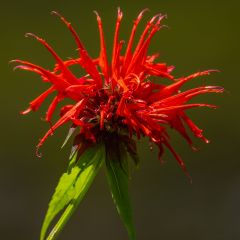
Monarda Fireball - Beebalm
- Flowering time August to October
- Height at maturity 40 cm
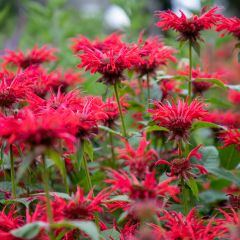
Monarda hybrida Gardenview Scarlet - Beebalm
- Flowering time August to October
- Height at maturity 80 cm
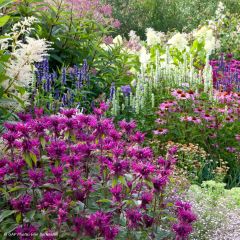
Monarda fistulosa Scorpion - Beebalm
- Flowering time August to November
- Height at maturity 90 cm
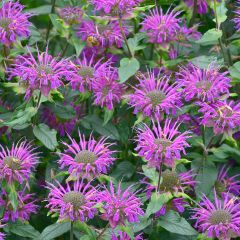
Monarda Prärienacht - Beebalm
- Flowering time August to November
- Height at maturity 90 cm

Monarda Beauty of Cobham - Beebalm
- Flowering time August to October
- Height at maturity 90 cm
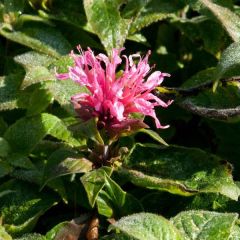
Monarda didyma Cranberry Lace - Beebalm
- Flowering time August to October
- Height at maturity 30 cm
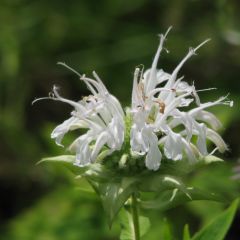
Monarda hybrida Schneewittchen - Beebalm
- Flowering time August to October
- Height at maturity 80 cm
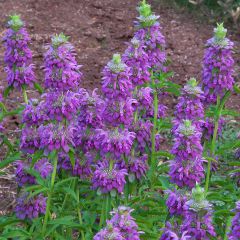
Monarda citriodora subsp. austromontana Bees Favourite - seeds
- Flowering time July to October
- Height at maturity 90 cm
Discover other Monarda - Bee Balm
View all →Available in 0 sizes
Available in 1 sizes
Available in 2 sizes
Available in 1 sizes
Available in 3 sizes
Available in 1 sizes
Available in 1 sizes
Available in 1 sizes
Available in 1 sizes
Available in 1 sizes
Planting Monarda
Where to plant?
Very hardy, Monarda is a perennial that adapts to a wide variety of climates and soils.
It enjoys sunny, but not scorching, exposures. In the hottest regions, such as those in the South-East of France, provide it with light shade. In cooler climates, such as the Jura or the Massif Central, aim for maximum brightness to fully enjoy its flowering.
It prefers soils rich in organic matter, but remaining moist. Avoid poor and dry soils where it would struggle to thrive. Very hardy, it withstands severe cold well. However, be careful, Monarda hates having its roots in water, especially in winter, as well as overly heavy soils.
We recommend planting it in fertile and well-drained soil. In heavy, clayey, compact soil, ensure a drainage layer of gravel or pumice at the planting stage.
While drought and soil moisture are its enemies, the soil pH is rather indifferent to it, with a slight preference for neutral to acidic soils.
Resistant to pollution, Monarda settles easily in city gardens, giving them a rustic feel. Rhizomatous, it can, however, become invasive when it finds a suitable location.
For minimal maintenance, use its wild character to flower an inaccessible space or as part of a meadow garden. Monarda also works wonders in borders or beds, either alone or mixed with other perennials, but care must be taken to control its spread.
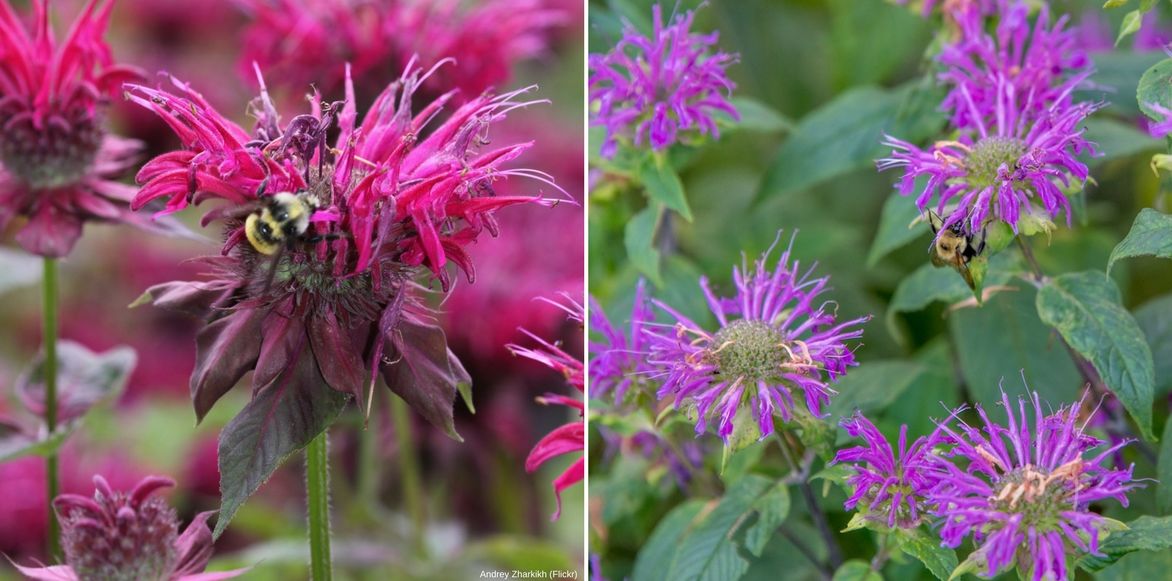
The flowers of Monarda are highly melliferous.
When to plant?
Monarda can be planted in spring or autumn. However, we recommend spring planting, particularly in very humid regions in autumn, such as along the coasts of the English Channel.
How to plant?
To plant Monarda:
- Soak the root ball to moisten it before planting.
- Dig a hole two to three times the volume of the root ball.
- Add a handful of well-decomposed compost. In heavy, compact soil, place a layer of gravel or pumice at the bottom of the planting hole to improve drainage.
- Position the plant in the planting hole and backfill. Ensure the plant is positioned so that the collar, the junction point of the roots and stem, is level with the soil surface.
- Lightly firm the soil and water immediately.
- Apply a layer of mulch at the base to retain moisture.
In beds or borders, plan for about 4 buckets/m². Space each plant at least 40 cm apart in all directions to ensure optimal growth and allow air circulation.
Container planting is certainly possible, as with most perennial plants, although this method of cultivation is not the preferred option for Monarda.
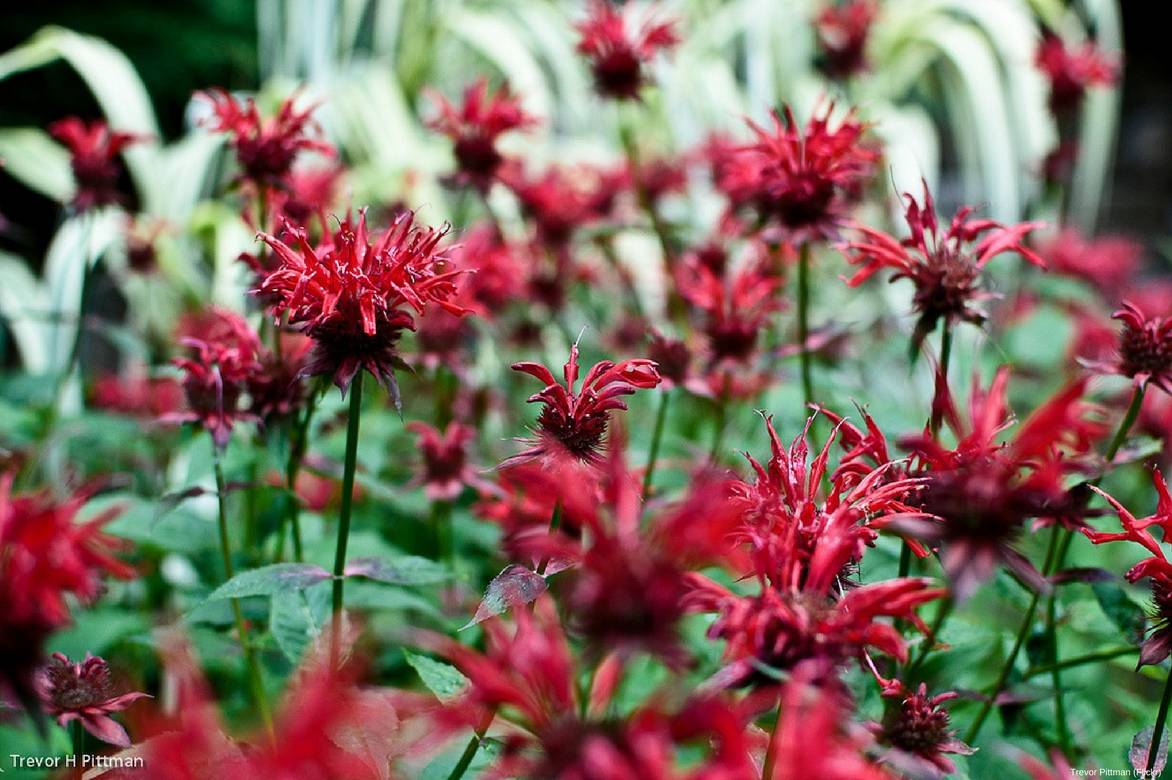
Red Monarda planted in mass.
Care
In good growing conditions, monarda is a low-maintenance plant that requires little care.
However, it is a greedy plant. We recommend adding some well-decomposed compost each spring, especially if your soil is poor. This addition helps to stimulate growth during this period of restart.
Water regularly in spring and summer, the soil should never dry out completely. Then, carefully mulch around the base to retain moisture. Soil dryness can hinder the plant’s proper development.
To encourage and prolong flowering, remove faded flowers as they appear. This operation will promote the emergence of new flowers.
In autumn or late winter, cut back the clump by trimming it to the ground once the leaves and flowers are completely dry.
 The faded flowers of monardas remain decorative once they have wilted; you can only cut them back at the end of winter.
The faded flowers of monardas remain decorative once they have wilted; you can only cut them back at the end of winter.
When monarda is happy, it tends to sucker, colonising the space and competing with neighbouring plants. Pull up new shoots as they appear if you wish to control its growth.
Caution: too much shade or high humidity in the air encourages the appearance of powdery mildew.
Diseases and Pests
Monarda is a perennial sensitive to powdery mildew. This disease, also known as white disease, is characterised by the appearance of a white fluff on the leaves that quickly spreads to the undersides and then to the entire plant. The causes of powdery mildew can be multiple: too high planting density, significant temperature fluctuations between day and night, excess humidity, prolonged drought…
As is often the case in disease management, prevention is the best remedy! To prevent the onset of powdery mildew, we recommend spacing your young plants well during planting (40 cm is a minimum for proper air circulation) and watering at the base in case of drought, ensuring to avoid wetting the foliage.
If these measures are insufficient, react at the first symptom to prevent the spread of the disease. Remove the affected parts and spray a nettle manure to strengthen the plant. Remember to thoroughly disinfect your pruning tools!
It should be noted that varieties resistant to powdery mildew have been developed, such as Monarda ‘Gardenview Scarlet’.
Regarding pests, the aromatic foliage of monardas tends to deter harmful insects. Hence its recommended use in the vegetable garden! However, be cautious of slugs, which are fond of young shoots in spring. The often-cited beer trap is not recommended. While this drink does attract slugs away from your plants, it is so attractive that it tends to gather all the slugs in the neighbourhood! To prevent an invasion, use a slug control product, such as Ferramol, which is suitable for organic farming. You can also try spraying a garlic decoction, an excellent repellent against slugs.
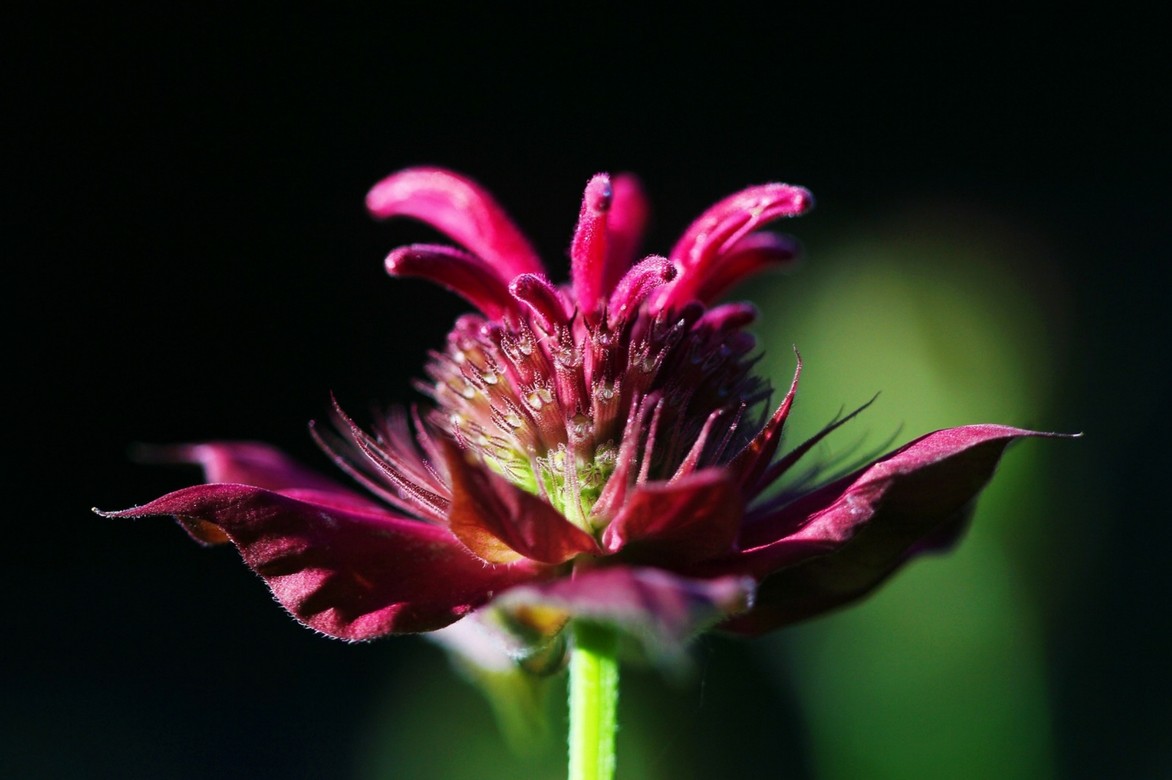
Monarda multiplication
The propagation of Monarda can be done by division, sowing, or propagation by cuttings. However, we recommend opting for clump division, which is much simpler to carry out and has a high success rate.
Division
Monarda is a perennial rhizomatous plant that produces numerous peripheral shoots. After a few years, the plant tends to become exhausted and bare in the centre. To allow it to regain its vigour, we recommend dividing it every 3-4 years.
In spring (March-April) or autumn (September-early October) for regions prone to drought:
- Dig up the clump using a well-sharpened spade.
- Separate it into several fragments, ensuring that each has sufficient roots.
- Replant each fragment immediately and water.
Be sure to keep the soil moist in the following weeks.
Sowing
Sowing is done in spring, between April and June, using seeds from a shop or those from dried flowers.
- Sow finely in trays using a “seed sowing” compost.
- Water lightly, without soaking the substrate.
- Transplant when there are 4-5 leaves into individual buckets.
- Wait until early autumn to plant them in their final location.
Direct sowing in place is also possible from May. Sow lightly (the seeds are very fine) and remember to thin your plants as they develop.
Be careful, Monarda varieties easily hybridise with each other, so seeds from the garden may produce plants with characteristics different from those of the parent plant!
Propagation by Cuttings
Propagation by cuttings is done in spring, between May and June, before Monarda flowers. Unlike sowing, this method preserves the character of the parent plant, but it is less common than division. This method is indeed much longer.
- Take a young shoot about ten centimetres long.
- Keep only the leaves from the upper part.
- Plant the cutting in a bucket filled with compost and lightly firm it down.
- Place the cutting in a bright location, but out of direct sunlight.
Keep the substrate moist until growth resumes, then grow it in a pot until the following spring, which is the ideal time for planting Monarda.
Associations
To create a stunning flowerbed, don’t be afraid to play with a contrast of colours and shapes by mixing a red-flowered monarda, such as the monarda ‘Gardenview Scarlet’, with other perennials in yellow and orange like rudbeckias or helianthus.
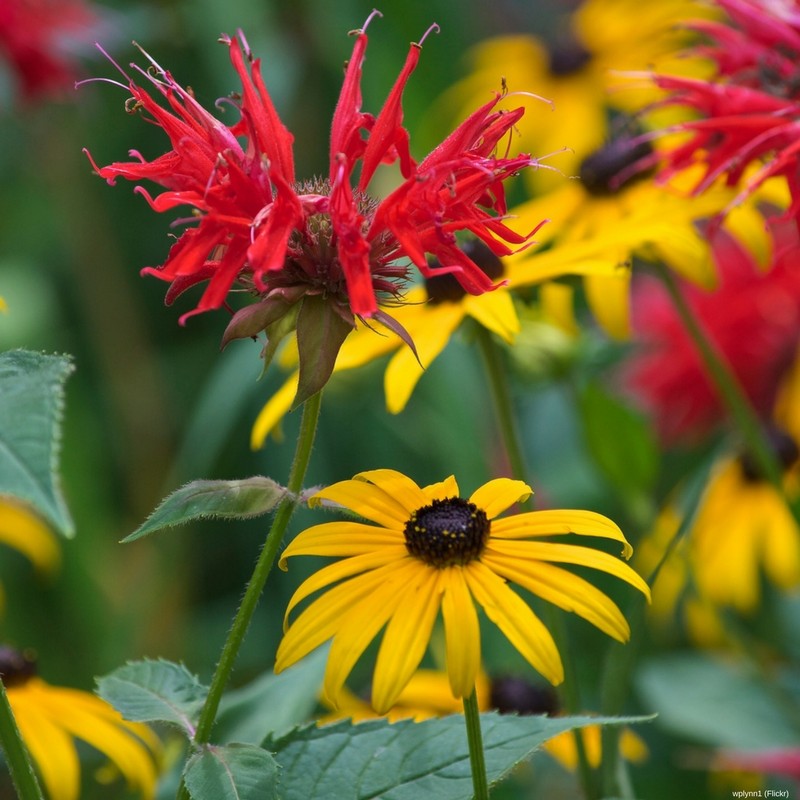
A contrasting association idea: Monarda ‘Gardenview Scarlet’ and Rudbeckia fulgida ‘Goldsturm’.
If you prefer romantic atmospheres, opt for pastel colours by pairing the soft pale pink of the monarda ‘Beauty of Cobham’ with the gentle blue of echinops and the mauve of agapanthus. The Campanula lactiflora ‘Alba’ with its milky flowers will also shine in this setting.
In a mixed border, place tall perennials in the background such as delphiniums and Rudbeckia maxima. Position your monarda plants in the centre, alternating with other perennials of varying heights to avoid monotony. Don’t hesitate to include a grass like Pennisetum, whose feathery bristles will add movement to your composition. Finally, in the foreground, focus on ground-cover plants by alternating green foliage with colourful foliage. Heucheras and ipomoeas, for example, offer a wide variety of colours and shapes.
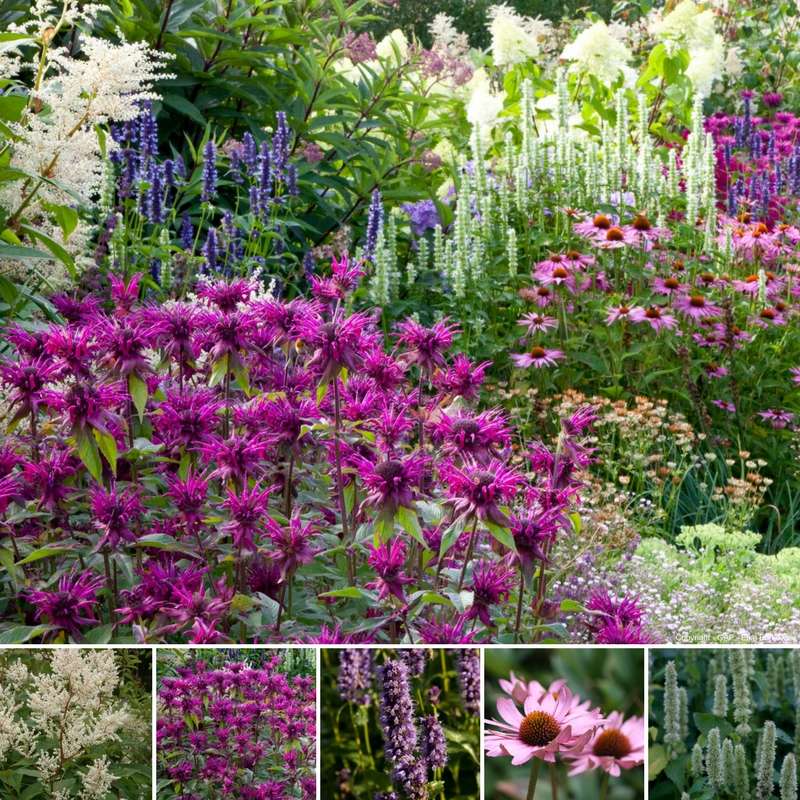
An example of an opulent association in a mixed border: Monarda ‘Scorpion’, Persicaria polymorpha, Echinacea purpurea, Agastache ‘Black Adder’, Agastache rugosa ‘Alabaster’.
For a more natural and rustic look, in a flowering meadow for example, focus on the slightly wild appearance of Monarda citriodora ‘Bees Favorite’ with its tiered flowers. Pair it with Oriental poppies with their large crumpled corollas or with the airy nigellas with their star-shaped flowers. Daisies and centaureas are also excellent candidates for this use.
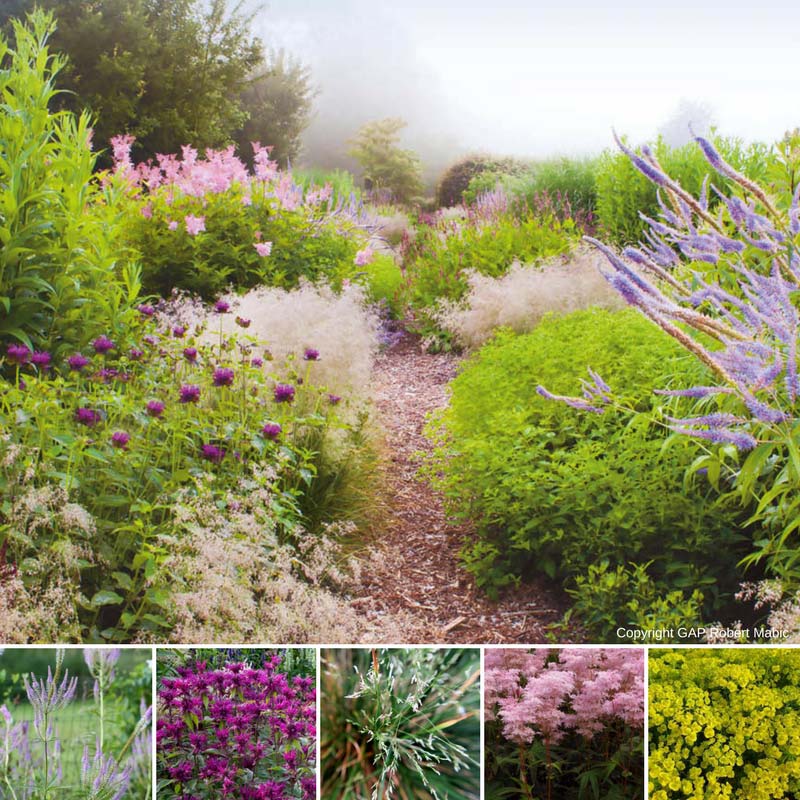
A beautiful example of a natural association: Monarda ‘Scorpion’, Deschampsia cespitosa, Veronicastrum virginicum ‘Fascination’, Euphorbia waldsteinii ‘Betten’, Filipendula palmata.
Aromatic and medicinal, monarda has its place in an herb garden (or priest’s garden). Plant Monarda fistulosa and Monarda citriodora alongside other aromatic herbs like lavender, Roman chamomile, hyssop, or perennial savory. You have plenty of choices! To enjoy its fragrance with every pass, pathways are also a great location.
Finally, to take advantage of its melliferous character, place monarda at the edge of the vegetable garden. The icing on the cake is that its scent tends to repel harmful insects!
Did you know?
Monarda has several nicknames including “red tea”, “Oswego tea” or “Indian tea”. Far from being random, these nicknames stem from one of the major events of the American Revolution, the famous “Boston Tea Party”.
In the 18th century, the British crown owned 13 American colonies. The colonists, heavily taxed, eventually revolted. Shipments of tea bore the brunt and were thrown into the sea. And the infusion of monarda took the opportunity to become the trendy drink!
The colonists simply adopted the traditional recipe of the Oswego Indians (present-day New York) who had been using monarda in infusions for its medicinal properties for centuries. The success was undeniable, even crossing the Atlantic, bringing with it the nicknames “red tea”, “Oswego tea” or “Indian tea” for monarda.
Useful resources
Discover our wide range of bee balms!
An article by Ingrid on our blog, to succeed with your flower bed.
Frequently asked questions
-
My monarda isn't growing; it seems to be stagnating. What should I do?
Poor soil lacking in organic matter hinders the growth of monarda. Add well-rotted compost each spring to restore its vigour. A lack of water or very heavy soil can have the same detrimental effects.
-
My young plants of Monarda have disappeared!
Beware, slugs are fond of young shoots! Stay vigilant in the weeks following planting and set up barriers of ash or coffee grounds. Don't forget to renew the operation after each rain. You can also use a slug repellent like Ferramol, to be spread at planting.
-
Why is my monarda becoming bare in the centre? What should I do?
Monarda, like mint, often ages poorly and needs to be divided every 3 to 4 years. Indeed, this perennial spreads through its underground rootstocks, which weakens the centre of the clump. Divide it in spring by separating the clump into fragments using a well-sharpened spade. Replant immediately and water.
- Subscribe!
- Contents
































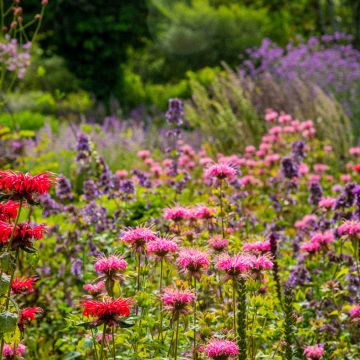

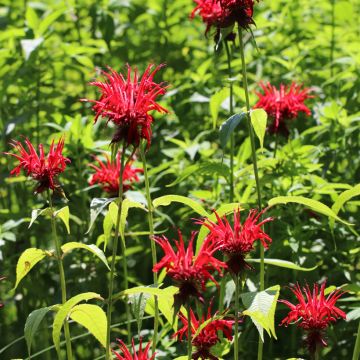

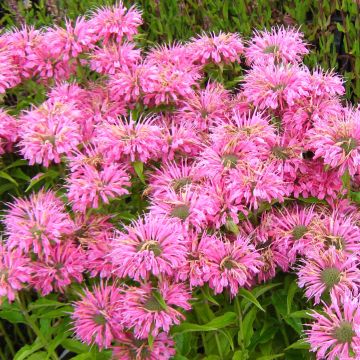

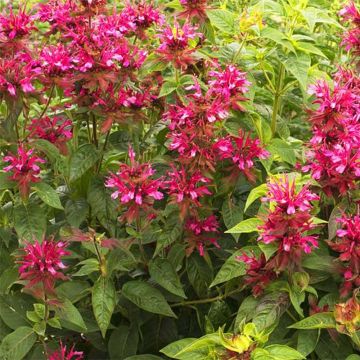
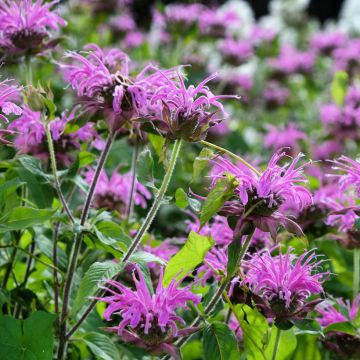

Comments